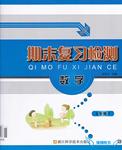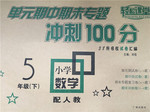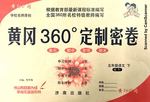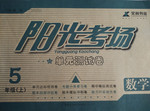题目内容
Leaves flying in the air, it _____ the old good days I spent in the mountain village.
|
A.suggests |
B.suggest me |
C.thinks |
D.thinks of |
A
【解析】略

 期末复习检测系列答案
期末复习检测系列答案 超能学典单元期中期末专题冲刺100分系列答案
超能学典单元期中期末专题冲刺100分系列答案 黄冈360度定制密卷系列答案
黄冈360度定制密卷系列答案 阳光考场单元测试卷系列答案
阳光考场单元测试卷系列答案“Indeed”George Washington wrote in his diary in 1785, “some kind of fly,or bug,had begun to eat the leaves before I left home.” But the father of America was not the father of bug.When Washington wrote that, Englishmen had been referring to insects as bugs for more than a century, and Americans had already created lightning-bug(萤火虫). But the Enlish were soon to stop using the bugs in their language, leaving it to be the Americans to call a bug a bug in the nineteenth and twentieth centuries.
The American bug could also be a person, referring to someone who was crazy about a particular activity.Although fan became the usual term, sports fans used to be called racing bugs, baseball bugs and the like.
Or the bug could be a small machine or object, for example, a bug-shaped car. The bug could also be a burlar alarm, from which comes the expression to bug, that is, “to install(安装) an alarm”. Now it means a small piece of equipment that people use for listening secretly to others’ conversations.Since the 1840s,to bug has long meant “to cheat”,and since the 1994s it has been annoying.
We also know the bug as a flaw n a computer program or other design.That meaning dates back to the time of Tomas Edison.In 1878 he explained bugs as “little problems and difficulties” that required months of stdy and labor to overcome in developing a successful product. In 1889 it was recorded that Edison “had been up the two previous nights discovering′a bug′ in his invented record player.”
【小题1】We learn from Paragraph 1 that .
| A.American had difficulty in learning to use the word “bug”. |
| B.George Washinton was the first person to call the insect a bug. |
| C.the word bug was still popularly used in England in the nineteenth century. |
| D.both the Englishmen and Americans used the word bug in the gighteen century. |
| A.Explanation. |
| B.Finding. |
| C.Origin. |
| D.Fault. |
| A.the misunderstanding of thr word bug |
| B.the deveopment of the word bug |
| C.the public views of the word bug |
| D.the special characteristics of the word bug |
Animal moms are great moms. You might be surprised at some of these moms.
Octopuses (章鱼)
The mother octopus lays about 50,000 eggs. For about 300 days, she stays with the eggs, cleans them and protects them. She does not leave to feed. However, this animal mom dies as soon as the eggs are hatched (孵化).
Crocodiles(鳄鱼)
A crocodile mother puts a lot of time and effort into raising her babies. She starts by building a nest (巢), which she guards for over two months! When the eggs are ready to hatch, the young crocs call out to their mother, who digs them out and helps them hatch. She then carries them in her mouth down to the water, where she will guard them for several more weeks or months until they learn to hunt on their own.
Bats (蝙蝠)
Bats become moms by hanging head up in a cave, giving birth. Catching the youngster before it can fall to the ground below, she puts it in a pouch (育儿袋). Bat moms may carry babies with them when feeding for the first few days. As the little bats get bigger and heavier, moms help them hang on the wall of their caves and return often to feed them. It continues for about three weeks, until the babies are grown up and able to fly on their own.
Koalas (考拉)
The animal mom gives birth after a pregnancy (怀孕期) of only 35 days. The hairless baby climbs into its mother’s pouch and lives there for another five months. When the little koala is between five and eight months old, it leaves the pouch for short periods of time but returns for safety. Once it is too big to return to the pouch, it will climb onto its mother’s back and ride there until it is about 12 months old.
【小题1】Which animal moms die when their babies are born?
| A.Octopuses. | B.Crocodiles. | C.Bats. | D.Koalas. |
| A.in her mouth | B.on her back | C.in her pouch | D.by her tail |
| A.gives birth by lying in the nest |
| B.gives birth by hanging in a cave |
| C.leaves its babies in the pouch for months |
| D.lets its babies live on their own after birth |
| A.About 3 days | B.About 3 weeks | C.About 13 weeks | D.About 3 months |
| A.35 days. | B.5 months. | C.8 months. | D.12 months. |


 when young. They build their homes about 4.6m above the river, an important feature (特征) for the safety of the young. It is called the hoatzin.
when young. They build their homes about 4.6m above the river, an important feature (特征) for the safety of the young. It is called the hoatzin. D.To produce their young.
D.To produce their young.